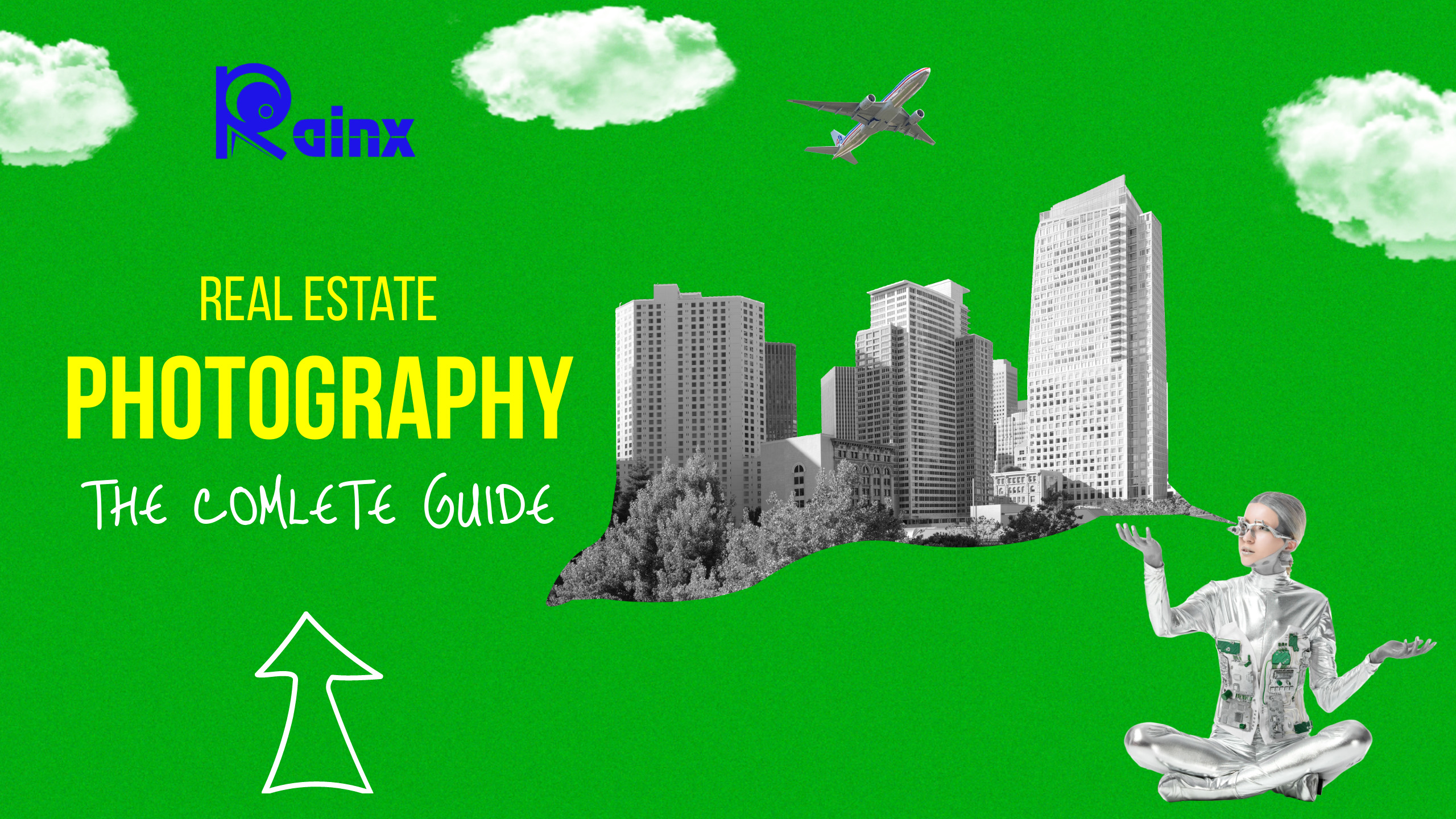Real Estate Photography Statistics
Estimated reading time: 8 minutes
If you want to make your real estate listings stand out, then you need to ensure you are using the right photography techniques. But what are the best techniques for real estate photography? In this blog post, we will take a look at some of the latest real estate photography statistics, including the cost of services, main types of images used in ads, factors that influence the quality of images, and more. We will also discuss the benefits of professional photography and how to make your real estate photos stand out. By the end of this post, you will have a better understanding of real estate photography and the best methods for creating great images for your listings.
(Image Suggestion: A professional real estate photographer taking a picture of a beautiful, modern home with a bright blue sky in the background.)
Table of contents
Dark Room Vs. Digital Photography Statistics
If you’re a real estate photographer, you know that digital photography has revolutionized the industry. Gone are the days when photographers had to lug around heavy cameras and huge storage media in dark rooms. Nowadays, most professionals use digital cameras to take pictures of properties. However, there are still some benefits to shooting in a dark room. In this section, we will discuss some of the benefits of dark room photography and how it differs from digital photography.
First and foremost, dark room photography is more challenging than digital photography. This is because digital photography relies on artificial lighting while darkroom photography requires the use of natural light. This extra step can create stunning images that cannot be created with digital technology alone. Additionally, darkroom photographers have more control over their images since they have complete control over the physical storage of their media. This means that they can save pictures for later or print them directly onto photo paper rather than relying on a computer file system like JPEGs or PNGs.
Despite these advantages, many real estate professionals still prefer to shoot in a digital environment due to its ease of use and low production costs. Digital photos can be edited quickly on computers and transferred easily to marketing materials or website content. In short, while there are definite benefits to shooting in a dark room, most real estate photographers today prefer the convenience and speed that comes with using digital photos instead.-.
Costs Of Real Estate Photography Services
When it comes to real estate, quality photographs can make a big impact. Statistics show that homes that have high-quality photography have a 10 percent increase in home prices. About 70% of real estate agents believe that photos and videos are essential in marketing a property. This is why it’s important to invest in professional photography services from the start.
Not only will your photos help to market your home, but they can also help you attract more buyers. About 91% of home buyers search for a home online, so having quality pictures is key in getting people interested in your property. In addition, 50% more views are seen on listings when quality photographs are included. The average cost for real estate photography is between $123 and $229, so don’t feel like you need to spend a lot of money to get great results.
However, if you’re looking for something extra special, drone photography services can cost between $500 and $1000 and 3D virtual tours range from $200 to $400. Professional staging can cost up to $2,500 for a 2,500 square foot home – so be sure to consult with a professional before starting any project!
Main Types Of Images Used In Real Estate Ads
When it comes to real estate photography, statistics show that aerial views and exterior shots are the most commonly used. While this may seem like a given, utilizing creative and effective photography can help give your ad a much-needed boost. Aerial views let potential homebuyers get a 360 degree view of the property, while exterior shots provide an overview of the surrounding area. Closely following are interior shots of the property, illustrating all of its features. Unsurprisingly, photos of features such as pools and gardens come in 4th and 5th place, respectively.
When it comes to real estate photography tips, it’s important to keep in mind that most ads focus on the exterior or inner space of the property. This is due to two factors: first, customers are more likely to be interested in properties that match their own lifestyle; second, showcasing plenty of images helps sell ads faster. Utilizing effective lighting and composition can go a long way in making your images stand out from the rest. By following these tips, you can create photos that will help boost your real estate ad’s ratings and appeal to potential homebuyers!
Factors That Influence The Quality Of Photos
Real estate photography is a popular profession, and with good reason. Images of homes can be very impactful – whether you’re selling a home or just looking to capture an amazing memory. In this section, we will outline some of the key factors that influence the quality of real estate photos.
First and foremost, proper lighting is essential for capturing great photos. If you’re not using the right lighting techniques, your photos will likely be poor in quality. It’s important to use versatile lenses that can capture wide angle shots as well as close ups. Quality staging is also important – make sure that you plan your shots ahead of time so that everything comes together perfectly in the end.
Another key factor is image resolution. Higher megapixel cameras give finer resolutions and more clarity in the photos, making them ideal for real estate photography. Additionally, using a tripod will help to keep your images stable and sharp throughout the shoot – something that’s especially important when shooting close up shots or those with a wide angle lens. Finally, post editing software can be used to enhance the quality and consistency of images before they are finally uploaded to your website or blog. By taking these simple steps, you can create high-quality real estate photos that will impress your audience!
When it comes to real estate, there’s nothing more important than having a great photo. Whether you’re selling your home or just trying to get more views on your listing, having professional photography can help make a huge difference. Here are some of the benefits that you can expect from using professional photography:.
– Higher quality images that are visually appealing: Professional photography offers images that are much higher in quality than what you would find on most home listings. This means that photos will look more polished and attractive, which will increase your chances of being successful when showing your property.
– More views on MLS: Professional photography is 12 times more likely to be shared on MLS than amateur photography. In addition, professional photos often lead to an increase in the listing price by 5%. This is because professionals take care to photograph every detail of the property so that buyers have an accurate idea of what they’re buying.
– Better first impressions: Having great photos can help buyers form a better opinion of your property right off the bat. They’ll see pictures that look like they’ve been taken in person, rather than generic stock shots taken by a homeowner with little experience in real estate photography. This will give them a stronger sense of confidence about making an offer and getting serious about buying your home.
– Speeds up the process: Professional photos can speed up the entire selling process by as much as 30%. Not only do they make it easier for potential buyers to understand your property, but they also create a consistent look throughout all listings –giving agents an edge over their competition.
There are countless reasons why using professional photography should be at the top of every agent’s list when it comes to real estate marketing and success! By investing in high-quality images, you’ll be able to stand out from the competition and build credibility with potential homebuyers all while saving time and money along the way.
How To Make Your Real Estate Photos Stand Out
When it comes to real estate photography, quality photos that capture the features of your property are key. With nearly 90% of buyers doing their research online, you want your photos to look great and jump out at potential buyers. Professional real estate photography should include detailed images of exterior and interior features, as well as detailed images of any special features (like pools or decks) that may be important to buyers.
To make sure that your photos look great on the market, you’ll need to invest in high-quality equipment. Professional photographers often use wide angle lenses and HDR techniques to produce more dynamic photos with a wider range of tones. You can also use props to add interest and visual appeal to your photos. By taking advantage of natural light and using post processing techniques, you can add depth and realism to your images that will really stand out on the market.
When composing your shots, be sure to balance the elements within the photo so that everything is balanced and looks natural. Use wide angle lenses for a more expansive view of your property while still capturing key details within the frame. Finally, don’t forget about post processing – using software like Photoshop or GIMP can give your photos a professional look that will set you apart from other real estate photographers on the market.
To Sum Things Up
Despite the increasing popularity of digital photography, there is no doubt that darkroom photography still has a place in the real estate industry. The advantages of using a darkroom over digital include more control over the final product, greater flexibility and accuracy in image reproduction, and a higher level of creativity.
latest post
- Best AI Tools for Project Management
 For effective project management, ClickUp, Monday.com, Notion, and Asana are excellent AI tools that help you complete your projects with minimal context switching.
For effective project management, ClickUp, Monday.com, Notion, and Asana are excellent AI tools that help you complete your projects with minimal context switching. - Best AI Tools to Convert Text to Video
 Some of the top AI tools for transforming text into video include Synthesia, VEED, Lumen5, and Invideo. These platforms allow you to craft impressive videos using customizable templates and voiceover options.
Some of the top AI tools for transforming text into video include Synthesia, VEED, Lumen5, and Invideo. These platforms allow you to craft impressive videos using customizable templates and voiceover options. - Starlink Satellite Internet
 SpaceX’s Starlink satellite internet provides seamless connectivity even in the most remote locations. Discover how Starlink satellites operate, their internet speeds, availability, and pricing options.
SpaceX’s Starlink satellite internet provides seamless connectivity even in the most remote locations. Discover how Starlink satellites operate, their internet speeds, availability, and pricing options. - Photo Editing for Christmas
 Make your Christmas photos better with Rainx. Discover ideas and tips for taking unique Christmas pictures.
Make your Christmas photos better with Rainx. Discover ideas and tips for taking unique Christmas pictures. - Wireless Technology
 Ixana highlights the advantages of Wireless Technology, noting that Wi-R Technology allows for connections with touch while consuming 100 times less energy than Bluetooth or Wi-Fi, all while supporting wearables that don’t require charging.
Ixana highlights the advantages of Wireless Technology, noting that Wi-R Technology allows for connections with touch while consuming 100 times less energy than Bluetooth or Wi-Fi, all while supporting wearables that don’t require charging.






